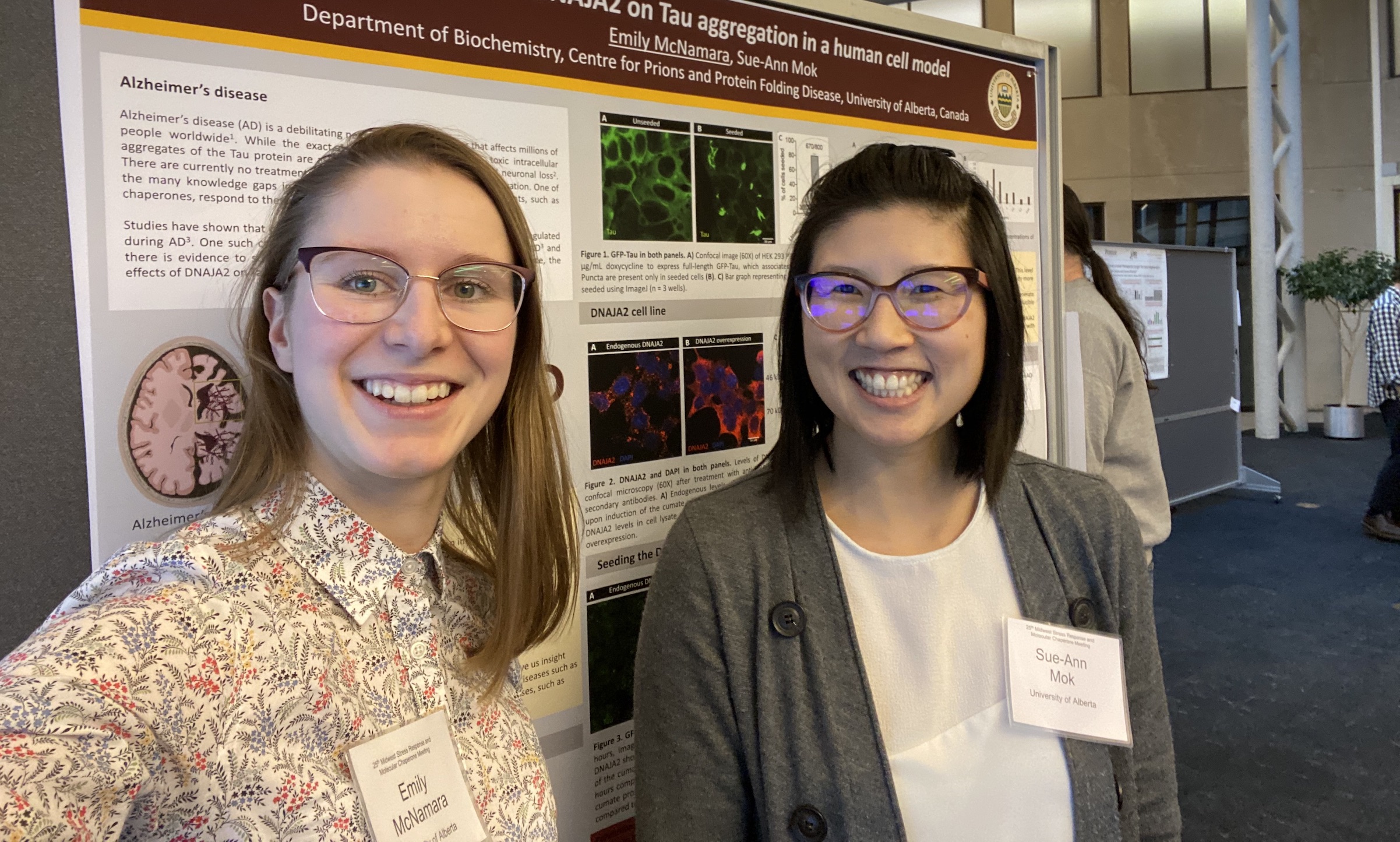
Why should you care about protein folding?
Proteins are the mini machines that carry out much of the work in the cell. For example, proteins make up the scaffolds that give our cells their shape and structure. In another example, proteins are integral components of the cell processes that replicate DNA, transcribe RNAs, and synthesize new proteins (very meta!). In order to carry out their evolved functions, proteins need to not only fold into a desired shape or structure but often also must be be able to bend, flex or morph into other structures under certain conditions.
Some proteins in the cell have inherent issues folding into or maintaining their desired shape. Proteins can also lose their shape (misfold) due to activity or time. The cell can also regularly experience conditions of stress e.g. oxidative stress that disrupt protein folding throughout the cell. Protein misfolding, if not corrected, can be deleterious to cell health. Several diseases, including many neurodegenerative diseases such as Alzheimer's, have been linked to the damaging build up of misfolded proteins.
Fortunately, our cells have evolved cellular defense systems to monitor and deal with protein folding problems. We are particularly fascinated by a group of protective proteins called chaperones. Chaperones have many known functions but can be considered as the first (and often last) line of defense for protein quality control in the cell. Many chaperones are evolved to recognize misfolded proteins. Some chaperones can bind to misfolded proteins and try to assist in getting them into the right shape. Chaperones can also guide misfolded proteins for destruction to prevent potential damage to the cell. It might sound pretty straightforward however, chaperones must effectively handle all the folding issues for the 10,000 different proteins expressed on average in each cell. Moreover, chaperones have to perform well in a consistently crowded cellular environment. It is no wonder that humans have evolved hundreds of different chaperones to handle all the potential protein folding problems. Our lab is in awe of the inherent complexity of protein folding and protein quality control and therefore, our research questions are focused on improving our understanding of these incredible processes.
Current major research themes in the lab:
Tau aggregation
Tau is an extremely soluble protein. So why is it found to misfold and aggregate in over a dozen neurodegenerative diseases including Alzheimer's? We are using high-throughput biochemistry to test thousands of variables to determine what exact makes tau aggregate and perhaps discover what can slow or prevent this process altogether.
Chaperone protection against protein aggregation and disease
Several diseases are associated with protein misfolding. One hypothesis is that these disease may be driven, in part, by the increasing failure of chaperones to prevent protein misfolding. We study the regulation and function of specific chaperones such as DNAJA2 that have been linked to protein aggregation and disease. We utilize a variety of biochemical and cellular tools to explore how chaperones interact with their targets and how we can boost their protective functions in cells.
Different cells, different protein folding problems
Our body is composed of many different types of cells (blood cells, skin cells, neurons). Each cell type expresses a collection of proteins specifically tailored to allow it to carry out its specific functions. We are very interested in understanding the specific protein folding problems for each cell type and how chaperones adapt to these distinct challenges.
Defects in protein translation and protein folding
Most people don't realize that protein translation is far from perfect and that a significant portion of our proteins are synthesized incorrectly. We look at how these translation errors are effectively handled by chaperones and the larger protein quality control (proteostasis) network.